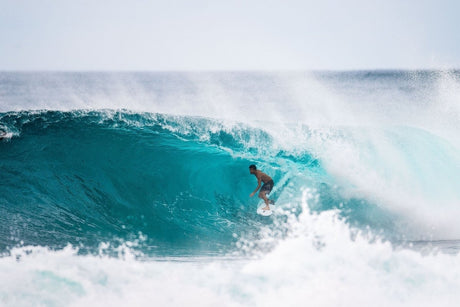The surfing world seems to be increasingly turning to extraordinary solutions to practice this iconic sport. Recent developments in Abu Dhabi perfectly illustrate this trend with the creation of a huge saltwater pool capable of generating the largest artificial waves in the world.
The arrival of Surf Abu Dhabi
Located in a region where surfing is not traditionally practiced, Surf Abu Dhabi was designed to offer perfect and consistent conditions for surfers of all levels. This facility, developed by Modon Holding in collaboration with surfing champion Kelly Slater, promises to revolutionize the way we conceive this sport.
A unique experience for competitions
For the first time, the World Surf League (WSL) has decided to hold two of its key events on artificial waves. The third stage of the WSL Longboard Tour as well as a stage of the 2025 Championship Tour will take place in this giant pool. The organizers see this as an opportunity to offer ideal and consistent surfing conditions, away from the usual unpredictability encountered at sea.
Unmissable benefits
Consistency and predictability
Unlike natural waves that depend on the whims of the weather and other environmental factors, artificial waves offer unmatched consistency. They allow surfers to train and perform in uniform conditions, thereby promoting the development of their technical skills.
Extended access
For regions of the world where surfing is not an easily accessible activity, these facilities represent a new opportunity to discover and practice this sport. Places like the Middle East, where natural conditions are not conducive to surfing, can now offer training courses, competitions, and regular events.
Controversies surrounding artificial waves
However, this innovative technology is not unanimously accepted. Many environmentalists criticize the ecological impacts of these installations, particularly the excessive water consumption and the carbon footprint related to their construction and operation.
Environmental impact
Artificial waves require a huge amount of water to be created and maintained. In arid regions like Abu Dhabi, this water consumption can exacerbate local issues related to water supply. Furthermore, the construction of these infrastructures often requires significant resources and can lead to the degradation of surrounding agricultural lands.
Cost of access
Finally, another point of criticism concerns the cost associated with access to these facilities. Unlike natural waves that are freely accessible, the use of artificial waves is often charged, sometimes even expensive, limiting access to certain segments of the population and creating an economic barrier for many enthusiasts.
Examples of similar projects
This phenomenon is not isolated to Abu Dhabi. Other similar projects have emerged around the world, notably in France, although some have been stopped following citizen mobilizations.
French initiatives
Several initiatives aimed at creating artificial wave pools have been launched in France, but many have faced strong local opposition. The projects planned for Saint-Père-en-Retz and Sevran, for example, were abandoned due to the mobilization of local residents and environmental associations.
Global aspirations
Globally, the trend shows a desire to integrate this technology into less traditional surfing locations. The goal is to make this sport accessible to a wide variety of populations while offering unique surfing experiences, far from the classic coastlines.
The evolution of environmental journalism
Committed media coverage
Faced with the emergence of such innovations, the need for independent and committed journalism becomes evident. Media outlets like Reporterre illustrate this approach by providing information free from any commercial or economic influence, highlighting the essential ecological issues for our society.
Supporting journalistic independence
The funding of this type of journalism relies mainly on donations from readers, ensuring genuine editorial freedom. Every contribution, no matter how modest, plays a crucial role in the sustainability of this mode of reporting and in promoting an informed public debate on environmental issues.
The trend towards artificial waves reflects a growing orientation towards technological and innovative solutions for outdoor sports. However, it also raises fundamental questions about the sustainability and accessibility of these practices. While the future of surfing may well partly lie in these new infrastructures, it remains essential to consider and balance ecological imperatives in this development.










